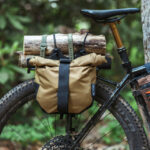The allure of the open road beckons, promising exhilarating rides and scenic views. Before you embark on your next cycling adventure, a crucial pre-ride ritual involves checking your Road Bike Tire Pressure. While a simple thumb-press might suffice for a quick check, achieving the ideal tire pressure significantly impacts your ride’s comfort, efficiency, and overall performance. For cyclists seeking precision and optimal handling, utilizing a pressure gauge or pump with a built-in gauge is highly recommended.
Determining the perfect road bike tire pressure is a nuanced process, influenced by a combination of factors. These include the type of road surfaces you’ll encounter, the specific tires mounted on your wheels, your body weight, and prevailing weather conditions. While tire pressure preferences are ultimately personal, this guide provides essential insights to help you make informed decisions when inflating your tires and preparing for your next road cycling experience.
Understanding Road Bike Tire Pressure for Optimal Riding
Setting the correct Pounds per Square Inch (PSI) for road bike tires is generally more straightforward than for off-road cycling disciplines. Your initial reference point should always be the tire sidewall. Road bike tires typically feature a recommended pressure range printed directly on them, often displayed as something like “Inflate to 75-95 PSI.” This range serves as an excellent starting point for your pressure adjustments.
Your body weight is a significant determinant of optimal road bike tire pressure. Heavier riders exert more force on their tires and should aim for pressures in the upper portion of the recommended range. This higher pressure helps prevent “pinch flats,” which occur when the tire compresses excessively and pinches the inner tube against the rim upon impact with road imperfections. Conversely, lighter cyclists can benefit from tire pressures towards the lower end of the specified range. Lower pressures offer a more compliant and comfortable ride, absorbing road vibrations while still providing adequate pinch flat protection.
Weight distribution on a bicycle is not uniform; the rear tire typically bears more load than the front. To compensate for this, many experienced riders choose to inflate their rear tire 5-10 PSI higher than their front tire. Conversely, the front tire’s primary role is steering and cornering. Reducing front tire pressure by 5-10 PSI increases the tire’s contact patch with the road surface. This enhanced contact translates to improved grip and stability, particularly beneficial when navigating corners and descents.
Environmental factors also play a crucial role in determining ideal road bike tire pressure. In wet conditions, reducing tire pressure slightly is advisable. Lower pressure increases the contact patch, enhancing grip on slick roads and improving control. Similarly, if your usual routes involve poorly maintained roads with cracks and potholes, slightly lower tire pressure will contribute to a more comfortable and forgiving ride, absorbing road imperfections more effectively.
Gravel and Varied Road Surface Tire Pressure Considerations
While this article primarily focuses on road bike tire pressure for paved surfaces, it’s worth briefly touching upon tire pressure for gravel and mixed-terrain riding. Similar to road tires, gravel tire sidewalls will provide a recommended pressure range. However, optimizing pressure for off-pavement riding is often more experimental due to the diverse nature of gravel surfaces.
Gravel riding encompasses a wide spectrum of conditions, from smooth dirt roads to chunky gravel and even singletrack trails. Tire pressure adjustments should reflect these variations. Softer surfaces, loose gravel, and more technical terrain generally necessitate lower tire pressures. This is especially true if you are using a tubeless tire setup, which is highly recommended for off-road riding as it mitigates the risk of pinch flats at lower pressures. If your tire pressure is too low, you might experience the tire bottoming out on the rim upon impacts or feel excessive tire squirm while cornering. In such cases, incrementally increase your tire pressure by a few PSI and reassess the ride feel.
Tire width also influences optimal gravel tire pressure. Wider tires, while heavier, allow for significantly lower pressures. These lower pressures enhance comfort and traction on uneven surfaces and can, in many situations, improve rolling resistance on gravel compared to overly inflated narrower tires. Experimentation is key to finding the sweet spot for your specific gravel tires and riding style.
Factors like tire tread pattern, casing construction, and personal preference for ride feel further contribute to individual tire pressure choices. There’s no universally perfect pressure. Experiment with different pressures to discover what feels best and performs optimally for your riding style and typical routes. Consulting resources like tire pressure charts, such as the example below from Nick Legan, Shimano Road Brand Manager and author of Gravel Cycling, can provide a helpful starting point for gravel tire pressure experimentation.
Conclusion: Finding Your Ideal Road Bike Tire Pressure
Whether you’re gliding on smooth asphalt or tackling varied terrain, optimizing your road bike tire pressure is fundamental for enhancing speed, comfort, and confidence. Investing a few moments before each ride to adjust your tire pressure based on anticipated road conditions and terrain is a worthwhile practice. Don’t hesitate to experiment with incremental pressure adjustments to pinpoint your personal sweet spot. Consider carrying a mini pump on your rides to facilitate on-the-go pressure adjustments as you refine your preferences and adapt to changing conditions. Ultimately, the right road bike tire pressure is a personalized setting that unlocks a more enjoyable and efficient cycling experience.

